In this post, we’ll explore the differences between live and dead rock, how to create a reef tank using either option, and the benefits and drawbacks of each.
Live Rock:
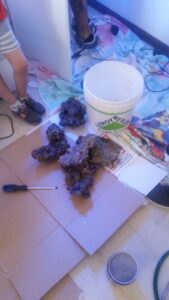
Live rock is an expression for the rocks that have been taken out of the sea and contain a biotic element. These organisms comprise bacteria, algae, and invertebrates (sponges, corals, and crustaceans). Live rock is a vital element of a reef aquarium, providing a habitat in the wild for marine organisms and a system that fosters healthy ecologies.
If live rock is being introduced to a tank, it must be appropriately cured. The process of curing live rock is the removal of everything that is dead and decaying that may be on the coral and all of the potentially harmful organisms on the coral. This process may take up to a couple of weeks, but it’s imperative to confirm that the rock is healthy for your aquarium setup.
Among benefits of using live rock in a reef tank is that it can provide a real natural habitat for its marine animals. The animals that live upon the rock supply nutrition and protection for your fish and invertebrates which help support a thriving ecosystem.
But there is cost associated with living rock installation. Live rock is costly, particularly if augmenting wild-caught live rock (e.g. Also, you’ll have to purchase enough rock to provide adequate home for your marine animals and this can get expensive.
Live rock is also a shortcoming of live rock as it can introduce xenobiotic species to the tank. Although treating the rock can mitigate the number of potentially harmful organisms, there is a always a possibility that some organism may bypass the treatment. This can cause a range of problems such as algae blooms, parasites, and so on difficult to manage.
Dead Rock:
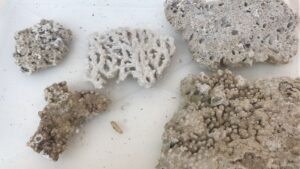
Dead rock is a term used to describe rocks that do not contain any living organisms. This type of rock is often used as a base for creating a reef tank, as it provides a stable foundation for live rock to be added later.
When using dead rock in your tank, it’s important to ensure that it’s properly cleaned and sterilized. This helps reduce the risk of introducing harmful organisms into your tank, as well as any unwanted debris or pollutants that may be present.
One of the biggest benefits of using dead rock in your reef tank is the cost. Dead rock is significantly less expensive than live rock, which can help reduce the overall cost of setting up your tank.
Dead rock also provides a stable foundation for live rock to be added later. This can help ensure that your tank has a solid structure and can support the weight of your marine life. Additionally, dead rock can be molded and shaped to create interesting and unique structures in your tank.
Another benefit of dead rock is that it doesn’t introduce unwanted organisms into your tank. As long as it’s properly cleaned and sterilized, you can be confident that it won’t bring any harmful parasites or bacteria into your ecosystem.
One of the biggest drawbacks of using dead rock in your reef tank is that it doesn’t provide the same level of natural habitat as live rock. While it can serve as a foundation for live rock, it doesn’t contain the same beneficial organisms that help promote a healthy ecosystem.
Another drawback of dead rock is that it can be less aesthetically pleasing than live rock. While you can mold and shape it to create interesting structures, it doesn’t have the same natural beauty of live rock.
Regardless of whether you choose to use live or dead rock in your reef tank, the process of setting up your tank will be similar. Here below some tips:
Strategically place rocks: While it’s tempting to pile rocks on top of one another, this can create dead zones where water becomes stagnant and harmful bacteria can grow. Instead, create a few key areas where your marine life can hide and explore, such as caves and arches. However, be sure to leave open space for swimming and water flow.
Ensure good water flow: To avoid dead zones, it’s important to have good water flow throughout the tank. Use a powerhead or other equipment to ensure water is circulating properly.
Use a reef-scaping guide: Consider using a “reef-scaping” guide to plan and design your rockwork layout. This will help you create a visually appealing and balanced setup. Personally I follow – MarcoRocks :you can find interesting information and many ideas
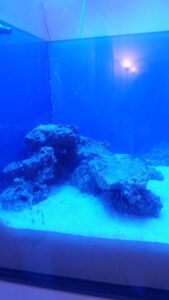
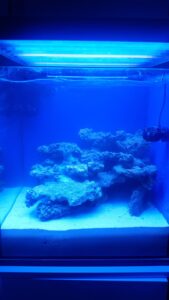
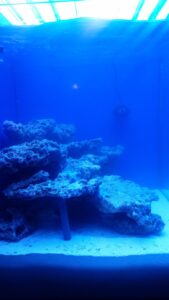
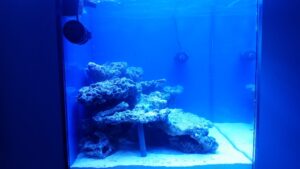
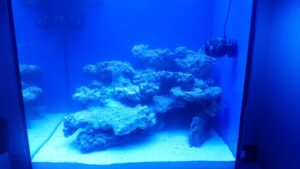
Choosing between live and dead rocks in setting up a reef tank is an aesthetic judgmentcall. Live rock offers an ethereal habitat to some marine organisms and supports the health and thriving of an ecosystem, however, it can be very expensive and leads to the inappropriate settlement of unwanted invertebrates in the tank. Dead rock is cheaper and does not bring new, undesirable organisms, but it has a different ecological profile than living rock.
Whether you opt for one of the two, setting up a reef tank is a personally satisfying and enjoyable activity. Just a bit of patience and attention and you can build a gorgeous and healthy living system in your house.
Please follow and like us:
